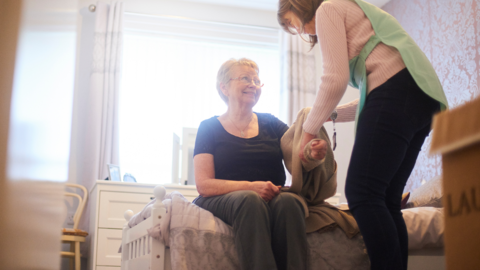by Ben Graham
This article originally appeared in Joe & Bella on September 21, 2021.
I wish we had always known about the benefits of what’s known as “adaptive wear” (clothes and shoes that are smartly designed for an easy-on, easy-off dressing experience as well as to function specifically for those with diverse physical and cognitive needs). They proved so helpful to my grandmother, even though many of the choices didn’t meet her aesthetic bar (more on that later).
One of the big reasons we started Joe & Bella was to help adults find clothes that function and look great. Adaptive clothes offer myriad benefits to care recipients and their care partners. Here are just six ways they make life a bit easier.
1. Adaptive Wear Reduces Pain
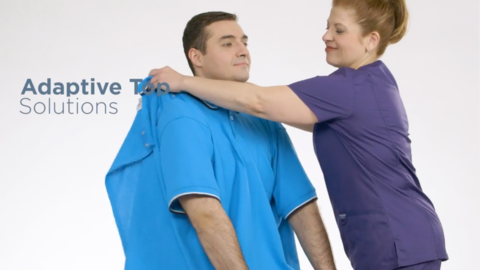
We installed a camera in my grandmother’s room during the pandemic to better connect with her. For really the first time, we observed her being dressed by a caregiver and saw just how painful the process can be. My grandmother was wheelchair-bound and was also challenged by limited mobility in her arms. So putting on a shirt, let alone pants, was a big, painful, frustrating ordeal.
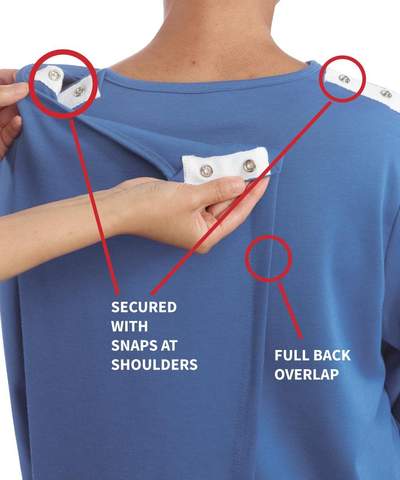
Adaptive clothes can help fix all of this. Tops fully open up in the back, so wearers can simply slide their arms through without having to raise them over their heads. For those who experience upper-arm pain or have mobility limitations, open-back shirts (as well as dresses, t-shirts, polos, button-downs, blouses, nightgowns, you name it!) make getting dressed and undressed easier and less painful.
Many of these items are so well designed that no
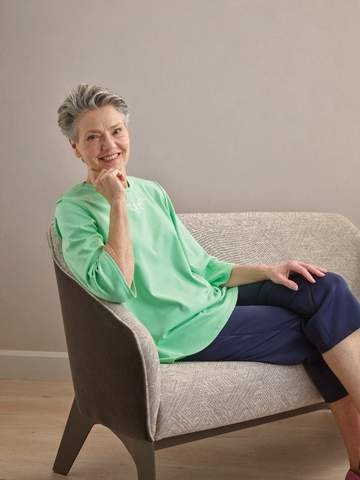
2. Adaptive Clothes & Shoes Can Increase and Extend Independence
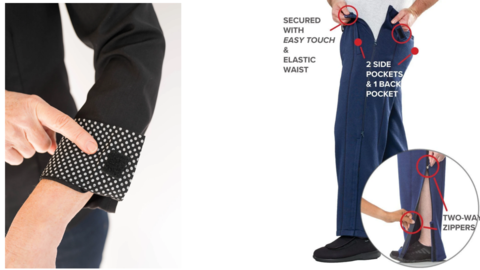
Many older adults have mobility limitations that make some aspect of dressing themselves a challenge at best or impossible at worst. Clothing that’s been smartly designed for these challenges can be a game changer. For example, adults who have arthritis or tremors might struggle to button a shirt. An adaptive solution would be to replace those buttons with magnets or velcro.
For those who struggle to bend down and tie shoelaces because of mobility challenges due to age, injuries, and other physical limitations, adaptive shoes with wide openings and alternative closures allow feet to easily slip in.
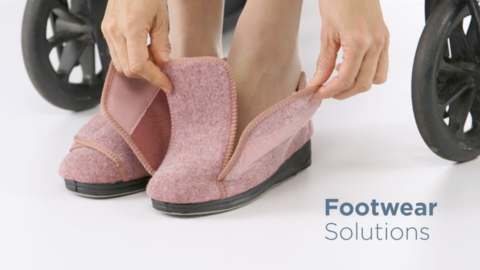
At Joe & Bella, we offer pants made of extra-stretchy fabric that can accommodate a catheter and even swollen legs (due to diabetes or surgery). Adaptive bottoms often include internal loops so the wearer has grips to more easily pull up the pants. Zippered openings at the ankle reduce the struggle of getting feet through. And, velcro or zippers at the waist secure pants without struggling with buttons or belts.
These often small modifications empower adults to dress themselves without assistance.
3. Adaptive Wear Adds Dignity to Dressing & Undressing
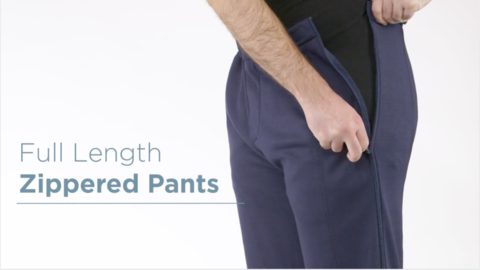
For some adults, small modifications are not enough, and they still require help when dressing. Transitioning to having someone dress and undress you is never fun. It can be a vulnerable and tedious twice-daily event. It also reminds the wearer of their dependence on someone else, which doesn’t feel good. And, the very process and struggle of having someone else dress and undress you can be stressful and less than dignified.
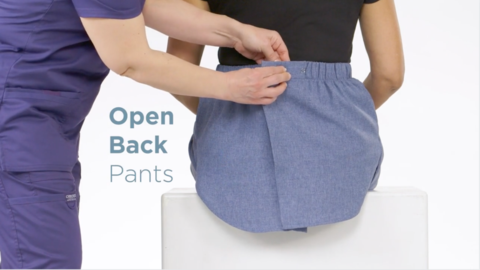
Joe & Bella carries pants specifically designed for those in wheelchairs to help make getting putting them on and off — as well as wearing these pants — easier and more dignified. We carry pants that have zippers from the ankle to the hip, so the wearer can easily slide into them while seated. We also carry traditional-looking jeans for those in wheelchairs. These include a balloon seat that sits a bit higher on the waist, making them more comfortable by preventing the jeans from sliding up. Joe & Bella also carries undergarments (including bras) with similar smart designs, such as side or front openings that allow the wearer to be comfortable and feel dignified while receiving help.This is so important!
4. Adaptive Wear Adds Safety
Fall prevention is a critical safety component for older adults. Most of us think first of products like bed rails and walkers as the best way to help people remain upright. But for many older adults, the first way to prevent a fall is with smartly designed footwear. Many older adults fall at night getting out of bed to go to the bathroom. Socks with grippers are a good idea (as are well-placed night lights), but a sturdy pair of shoes or slippers can be even safer. We recommend that older adults have shoes and slippers that they can easily get on before walking across floors. Footwear with a wide-open heel or that fully opens up on the top with secured velcro are terrific options.
Clothes that don’t meet the evolving physical and cognitive demands of aging adults can be outright dangerous. Adults might slip and fall when trying to put on non-adaptive clothes, or injure their arms or legs when taking them off.

Some adults, often in the later stages of dementia, might have a compulsion to remove their clothes. “Anti-strip” clothes for people living with dementia are not new, but continue to be improved. As part of our goal to add dignity to the process of dressing, Joe & Bella offers anti-strip jumpsuits that don’t look like adaptive clothes, but instead look like a pair of pants and a shirt; they’re designed with comfort in mind with buttons in the back that the wearer cannot reach.
5. Adaptive Wear Helps Care Partners
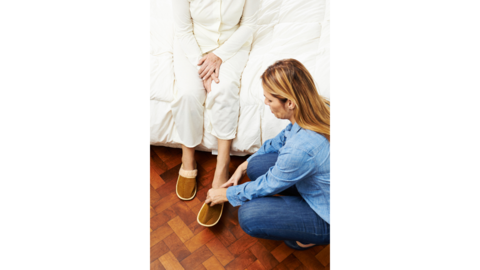
Adaptive clothes not only help the care recipient, they also make caregivers’ lives easier. Whether you’re a family or professional care partner, assisting someone in dressing and undressing can be stressful while also presenting a physical challenge. Care partners often need to lift someone off a wheelchair, putting undue pressure on their lower back. They might also need to roll someone over or lift up the care recipient’s lower body during dressing. Adaptive clothing makes this process easier, quicker, and safer for the care partner. My grandma used to throw a bit of a fit when a caregiver would accidentally cause her even the slightest bit of discomfort while getting her dressed. Adaptive clothing can eliminate that tension, so care partners can truly focus on care and use these moments instead to build trust.
6. Adaptive Clothes Can Be Fashionable and Fabulous
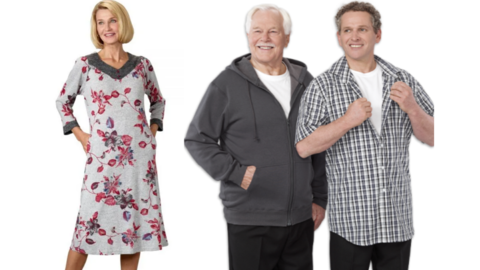
When a care recipient is happy, so too are care partners. Nobody wants to wear clothes that look and feel different from the styles they always wore. What we wear is a part of our identity, which should be respected and honored. As adults age (particularly those in care communities), their personal identity and preferences can become less a priority for caregivers who focus on their most basic health and wellness needs. Wearing clothes that you like to wear, because they look and feel great, provides an important emotional and cognitive boost.
Joe & Bella is dedicated to our mission of supporting care partners by helping make older adults’ lives more dignified, easier, and happier. Please browse our collection of adaptive wear here, and please let us know if you have any questions or suggestions.

